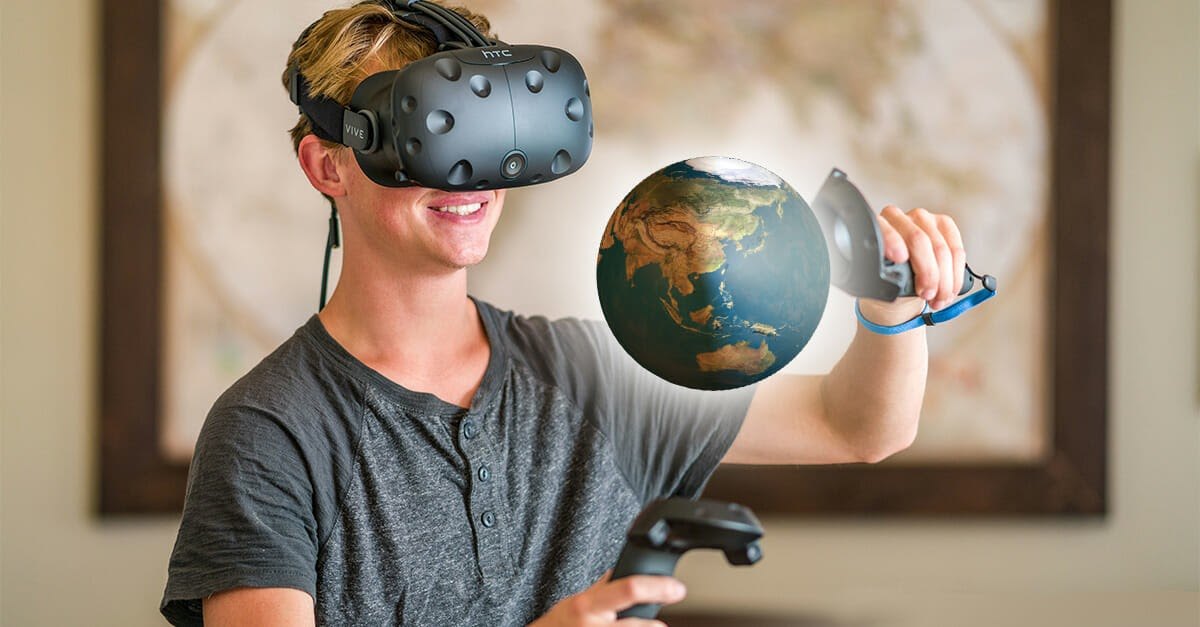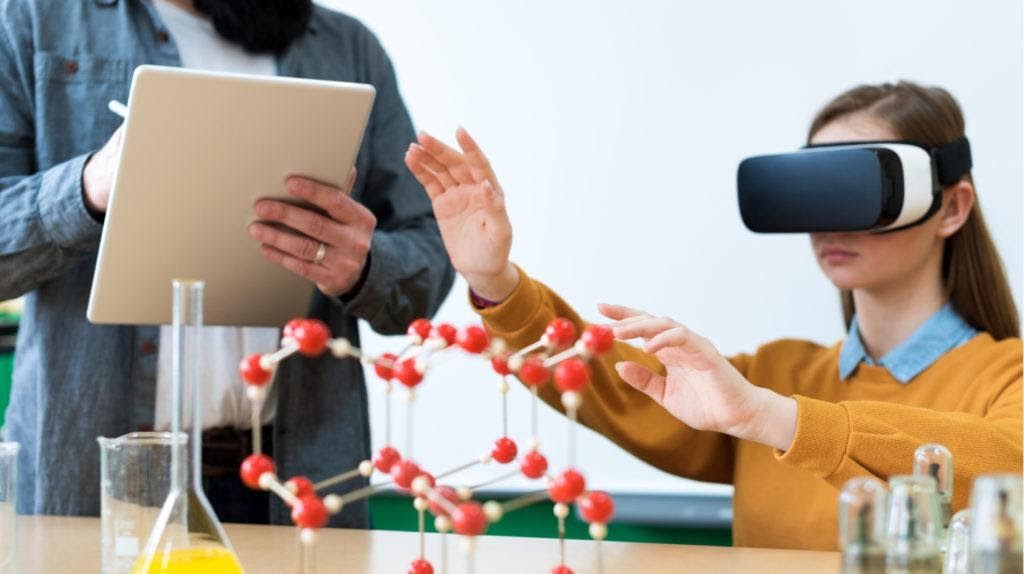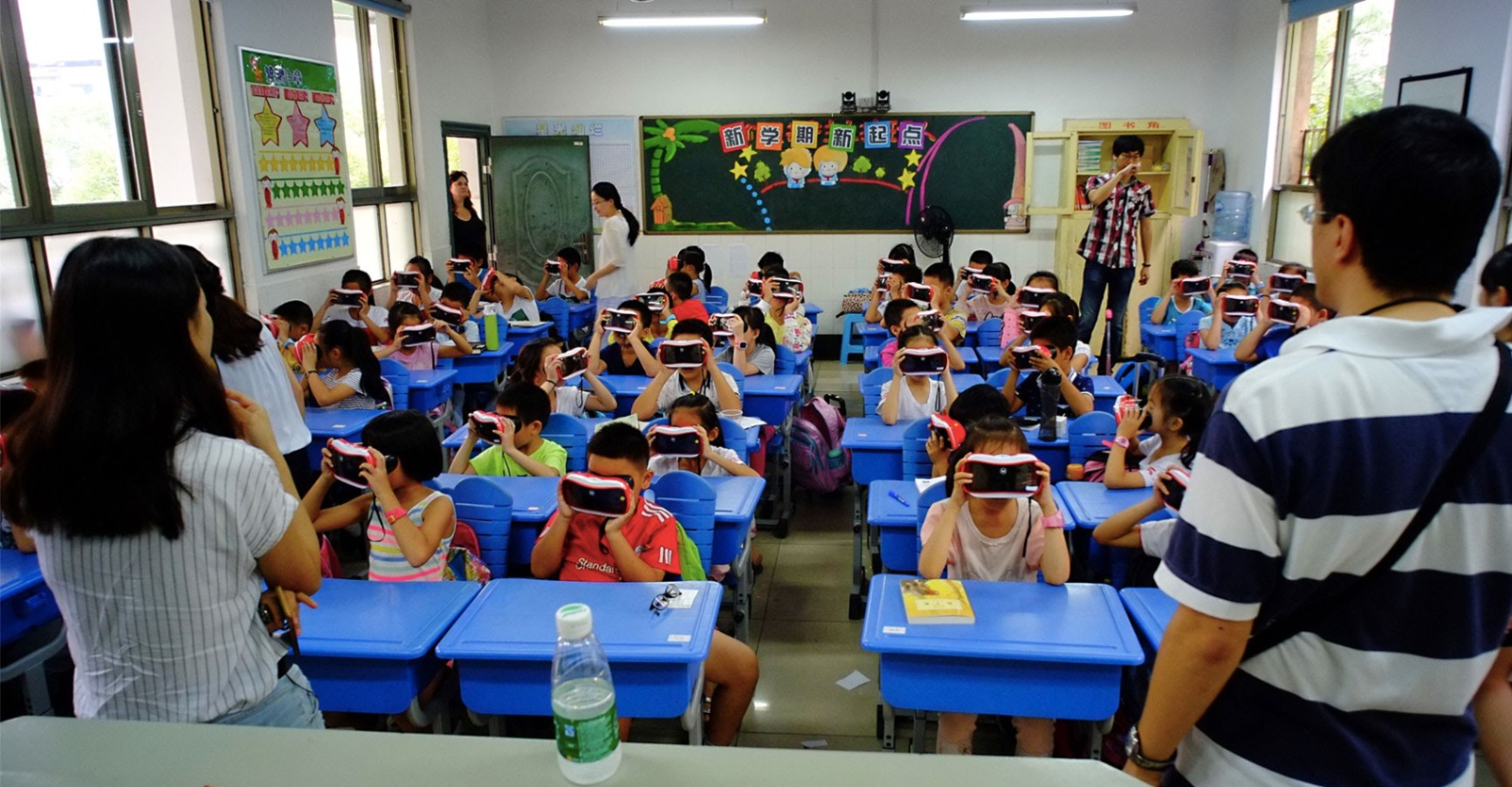Every aspect of our daily lives improves as we integrate technology with them. It seems to be a natural course of humanity to progress or develop as we continue to improve technology. In no time, technology has become a necessity in everything we do.
One aspect of life that was greatly affected by the rise of technology is education, especially since it is a top priority and vital component for progress. Thus, the educational system has long been integrating new technologies as soon as they arise and whenever they deem beneficial it and necessary.
The latest technology that the educational system has been using in the instruction and learning experience is virtual reality (VR). Learn below how VR is being utilized in schools and how it helps the students have an immersive learning experience.
- Virtual Reality
- Virtual Reality In Education
- Benefits Of Virtual Reality In Education
- Other Benefits Of Virtual Reality In Education

Virtual Reality
It was quite a long time ago when I was first introduced to virtual reality, and it left me in awe because it made sense as technological innovation. It is not surprising that people will eventually create simulations of reality on a device.

VR aims to simulate the human experience that can be completely similar or different to the real world. It is fascinating because the possibility of experiencing things in the world becomes limitless with a small device. People need to have the proper equipment and environment to do so.
To simulate experiences, virtual reality systems use the standard virtual reality headsets or the multi-projected environments wherein highly realistic images, sounds, and sensations are created. With this, people can explore virtual reality by seeing things, moving around, and interacting with the items and features.
Since the VR headset is the most common one, people primarily experience virtual reality activating the sense of sight. However, the multi-projected environment lets people experience virtual reality and activates all senses such as sight, smell, and hearing. In some advanced equipment, they use haptic technology wherein the reality reacts with the human movement.
Virtual Reality Applications
Through time, VR technology has evolved to have several uses and applications. I first encountered virtual reality through video games which I enjoyed so much because I have been into video games for years already. I can say that the experience that VR brought to the table for video gaming is highly immersive.
Aside from video games, another virtual reality usage is for businesses. Since VR can simulate experiences, it can be utilized to convince potential buyers and customers of their products with its uses and functions. Moreover, virtual reality can be maximized during remote or virtual meetings.
One of the latest additions to the uses of VR is in the education sector. It has been used to train medical and military personnel to apply their knowledge in real-life scenarios. The educational institutions do not need to set up elaborate simulations as they only need to program the VR to conduct the training.
Virtual Reality In Education
I am a witness to how education has integrated different technologies through time in which they try to improve student’s quality of learning. I remembered how books slowly turned into electronic books (e-books). There is also a transition from a physical classroom setup into a remote and virtual classroom.

So, it is not surprising that schools have slowly integrated virtual reality into education. VR has been introduced in primary education like pre-school, grade school, and high school. It has been a steady process from being used as an extra learning material resource to one of the main aid in instructional delivery.
I know several schools using VR as part of their daily classroom experience to have a meaningful time during discussions or learning experiences. Thus, these schools invested in the equipment and materials even though it is pricey, so the number of schools is limited.
The common scenario I have seen is that schools built one multi-projected environment room and have around 30 VR headsets. These materials are enough to cater to their number of students but in rotational usage. Understandably, only a few invest in equipment since the facilities are usually privately-owned or sponsored.
Subjects Where Virtual Reality Can Be Maximized
High school subjects may be simple, but I think it is important, especially during students’ developmental stage of learning. It is a must to provide a great avenue for them to have holistic learning, which they can achieve using all possible resource materials for classroom activities.
I noticed that schools prioritize some subjects in utilizing virtual reality equipment. They say that it works best for geography classes because they can explore the places the books usually describe. They will not rely on imagination or images online to understand the details and information about a specific place as they can experience going there through VR.
Aside from geography classes, science classes will benefit from this VR setup because it can simulate natural phenomena that can aid the more profound understanding of students. In addition, teachers can simulate laboratory classes through virtual reality. Other subjects that VR can help the students’ learning are literature, history, and many more.
Benefits Of Virtual Reality In Education
As the education system leans towards the use of technology, there are changes in the students being taught because of the varying nature of how students learn. To adjust to this demand of learning needs, the teachers are assumed only to facilitate learning as we give high importance to “learning by doing.”

With this idea, virtual reality can come into play because of its immersive and interactive nature. The teachers will only lead students with several activities to explore and learn based on what they experienced. For example, laboratory classes using virtual reality.
Moreover, virtual reality in education promotes a scale learning experience because the VR headset can act as the whole science laboratory. They can do so many things with just a small device even if they do not go to science laboratories.
In fact, I have encountered a teacher who uses VR to introduce laboratory equipment and preparation for experiments. When they go to an actual laboratory, the students only need minimal supervision. Although, schools must invest big time in these devices to materialize the scaling.
Visual Learning Through Virtual Reality
One of the most significant advantages of virtual reality in education is that it caters to students’ visual learning. VR offers the students a visualization or presentation of complex ideas that may be hard to understand when discussed or described. It will be easier for them to break down these ideas into a more understandable chunk.
For example, I encountered students sharing how their teacher used VR to show cell division. Even though they can watch it on any other audiovisual presentation, it is still different when presented in VR because they can interact with the simulated subject that activates their other senses and will retain in their memory.
For visual learning, the subject that will benefit the most is geography because the teachers can bring the students to the places they are talking about. With VR headsets, they can explore the places 360 degrees and see the niches of the place, which will yield a meaningful experience. They call this the virtual field trip.
Other Benefits Of Virtual Reality In Education
When I first learned that VR is used in education, the first thing that came to mind is how VR can develop creativity. Virtual reality provides an almost limitless pace for them to learn and explore new things. Students can easily be creative when it comes to content creation with the other tools in VR.

As I mentioned, VR promotes meaningful experiences to students necessary for the long-term retention of information and learning. Another factor why VR effectively creates such an experience is its ability to elicit an emotional reaction from the students.
According to studies, when something causes visceral reactions, it can lead to making memories. We know that memories are retained easily, so the students can associate them with the information they obtained during that virtual reality activity. Also, the students will be engaged more in these activities, knowing they create more memories.
The students will also be more participative in discussions, given that they have a shared experience with their classmates. In this case, there will be no student left behind during meetings. Lastly, VR activities will promote a collaborative environment among students as they can have fun working together while learning.
Embracing New Technology In Education
Given that people rely on technology for progress, I think they must also understand the importance of embracing these new technologies. It must end with knowing the importance and learning to use and integrate into our daily lives.
The use of virtual reality in education is an excellent example of this. Teachers can learn many things by using VR in their class activities because they will be challenged to be creative in finding ways to maximize VR to aid learning. Moreover, they also need to learn how to use VR.
Meanwhile, the students can use their experience in VR classes and activities to create lifelong learning by retaining information.
Conclusion
Technology will always push us to develop, and it is essential to know how we can utilize them in our daily lives. The use of virtual reality in education is a start of a new era in students’ learning process in which the schools must learn how to maximize this technology to aid learning.